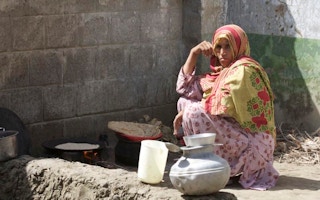Can building a road, improving electricity access, or upgrading a port help to promote gender equality?
Though it might seem counter-intuitive, the answer is an unqualified ‘yes’. The fact is that poor infrastructure exacerbates the gender gap in many ways.
Women and girls living in areas with poor roads and water services must spend several hours to fetch water or attend school. At night, a lack of lighting can mean that they fear for their safety.
Development organisations have become aware of the problem, and ADB in particular has made significant progress on making its infrastructure investments gender-responsive. For instance, ADB projects support rural electrification and clean cooking fuels to help women save time collecting firewood while mitigating the health hazard of a smoky environment.
Renewable energy is a good sector for these interventions. An ADB project in Vietnam provided subsidised connections to power grids for households headed by women, involved women’s groups in energy efficiency campaigns, and registered replacement land in the names of both husband and wife.
With gender-responsive features, transport projects enhance women’s mobility
Making infrastructure gender-responsive is not rocket science. It can be as simple as putting streetlights on roads, replacing wood and charcoal with clean cooking fuel, or bringing safe piped water into or near homes.
Road, rail, and port projects can do their part to narrow the gender gap by featuring well-lit roads, women-only carriages and resting and waiting areas, and establishing market areas along roads.
In Bangladesh, for example, we learned that streetlights help young women commute safely to work after dark. And in the Lao People’s Democratic Republic, we realised that women benefit from setting aside public transport station jobs and shop spaces for female-run businesses.
Such features help ensure that transport projects make a positive impact on women’s mobility and enhance their access to education and health services as well as markets.
Scaling up on gender-responsive infrastructure
ADB-funded roads in Bangladesh and India have made it easier for women and girls to attend school and visit health facilities. More than 80 per cent of female beneficiaries confirmed this in surveys.
Gender-responsive transport and water infrastructure can reduce the time women spend on traveling and fetching water. A rural road project in Cambodia more than halved women’s travel time to markets, as it encouraged women to ride motorbikes. That in turn made it easier to transport seeds, fertilisers and produce.
“
Making infrastructure gender-responsive is not rocket science. It can be as simple as putting streetlights on roads, replacing wood and charcoal with clean cooking fuel, or bringing safe piped water into or near homes.
Still, much work needs to be done.
Although transport and energy accounted for more than half of ADB investment in 2005–2015, in the same period these two sectors contributed only about one-third of gender-mainstreamed projects.
Time to better integrate gender features in infrastructure investments
In contrast, agriculture and natural resources, education, health, and urban water accounted for more than half of ADB’s gender-mainstreamed projects from 2005 to 2015, even though these sectors accounted for less than one-fourth of ADB’s portfolio during that period.
One way to move forward is to better integrate gender-responsive components in infrastructure investments, as noted in a recent Independent Evaluation report. This would entail increasing the pipeline of projects in some infrastructure subsectors that gender-responsive features are easier to add to, such as rural road and electrification, and clean cooking fuels and fuel efficient stoves.
The monitoring of gender outcomes in infrastructure also needs to be strengthened to build an evidence base for successful gender approaches that can be replicated or scaled up.
We can accomplish this by adopting outcome indicators such as estimates of time savings per trip for women, improved frequency of trips to health clinics, income change for female workers and entrepreneurs, and changes in cooking practices.
Making infrastructure projects gender-responsive can help women and girls lead healthy and productive lives. And that will determine whether gender equality becomes an everyday reality, or remains a distant goal.
Hyun H. Son is Principal Evaluation Specialist, Independent Evaluation Department at the Asian Development Bank. This post is republished from the ADB blog.


















